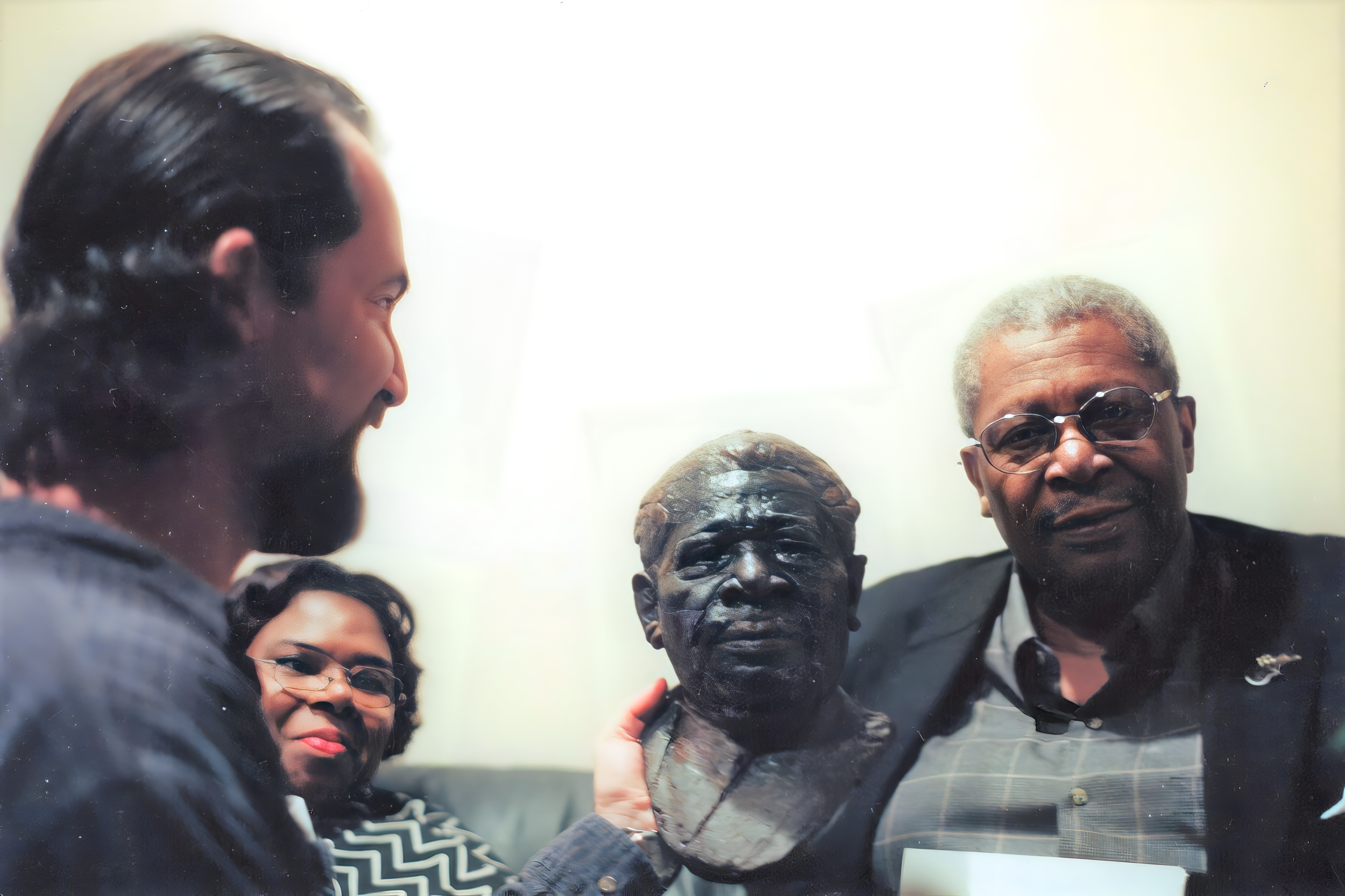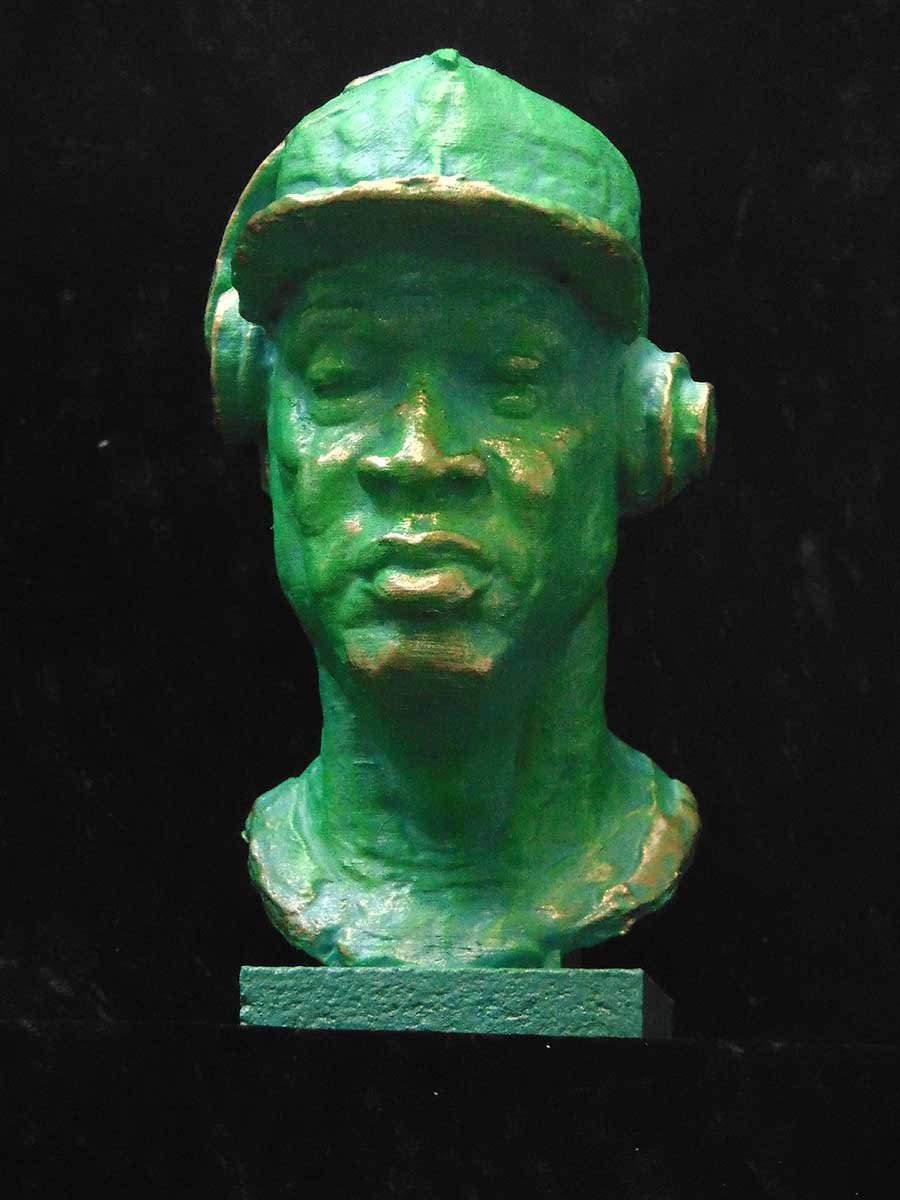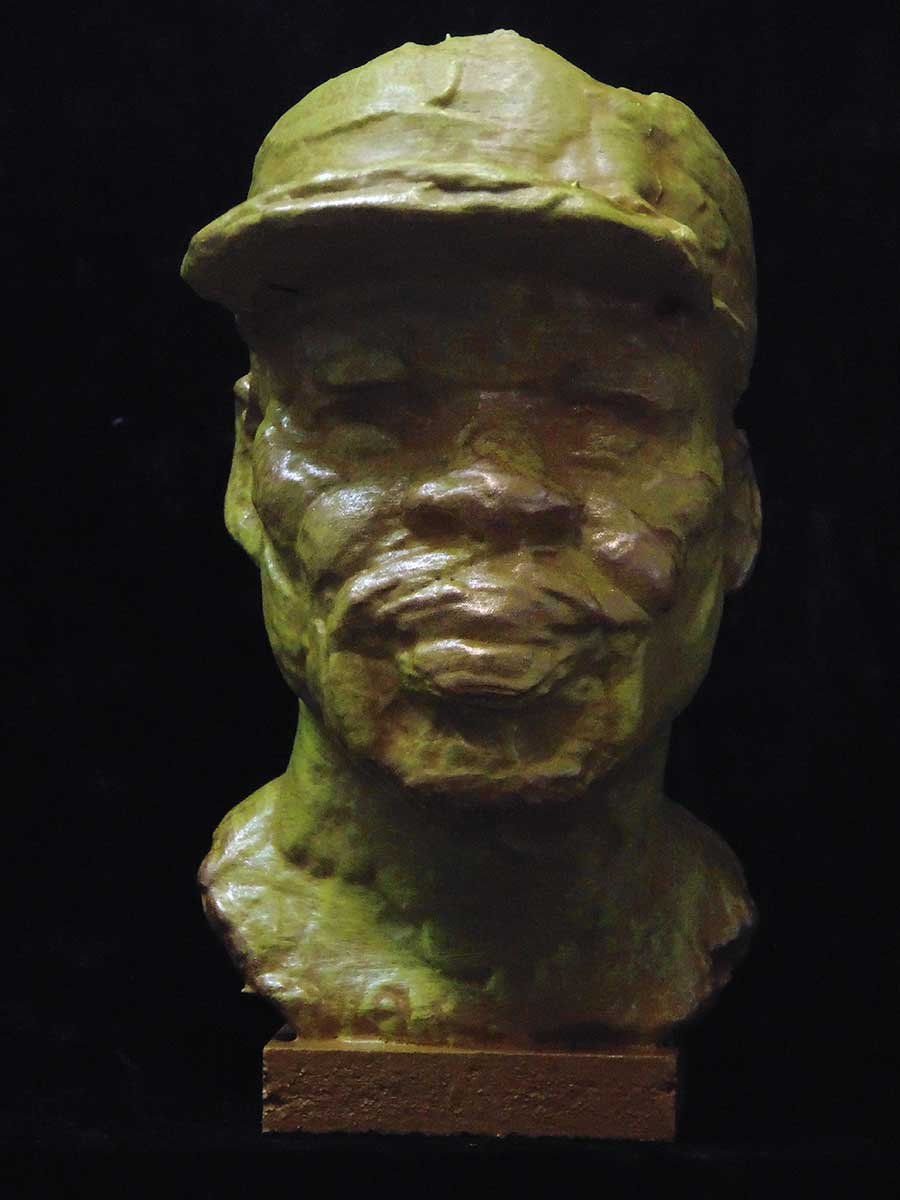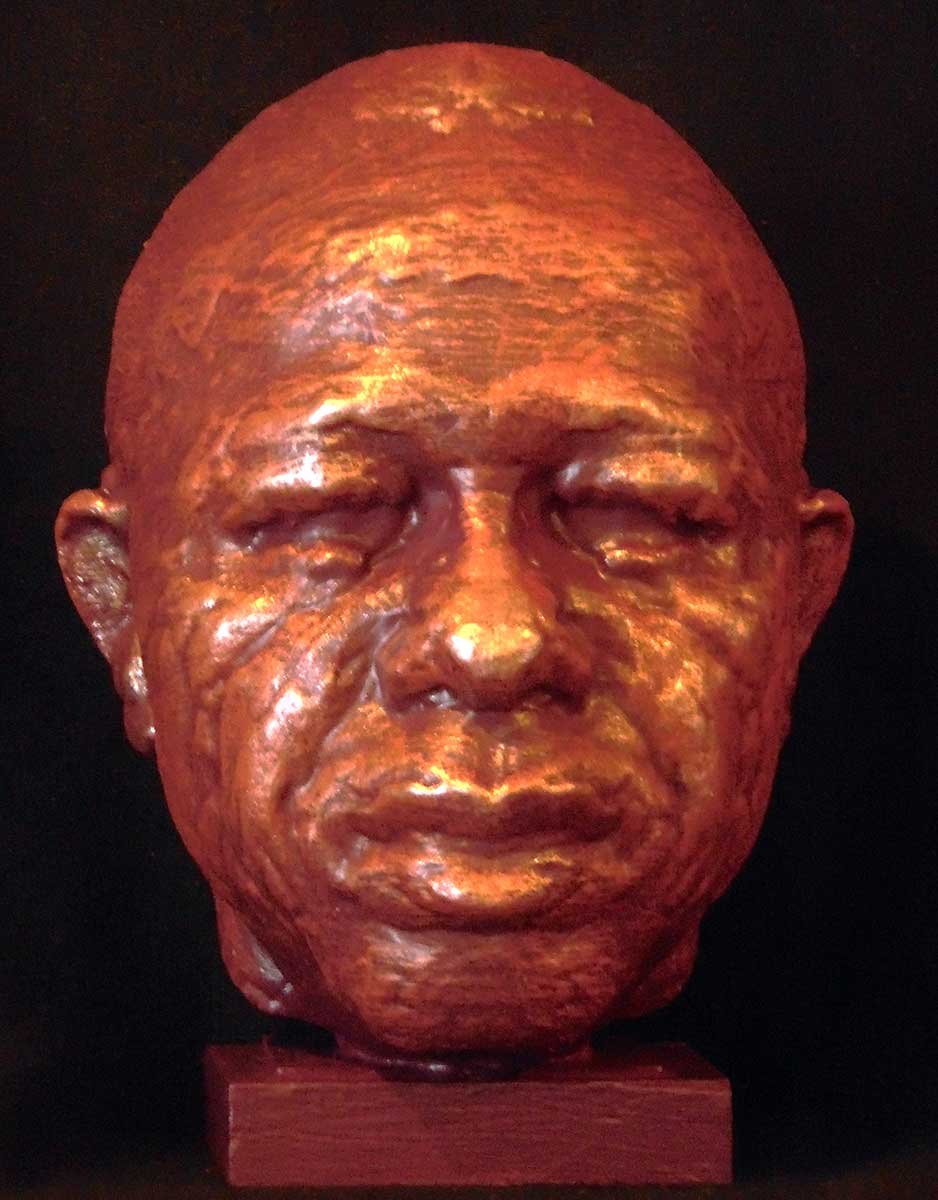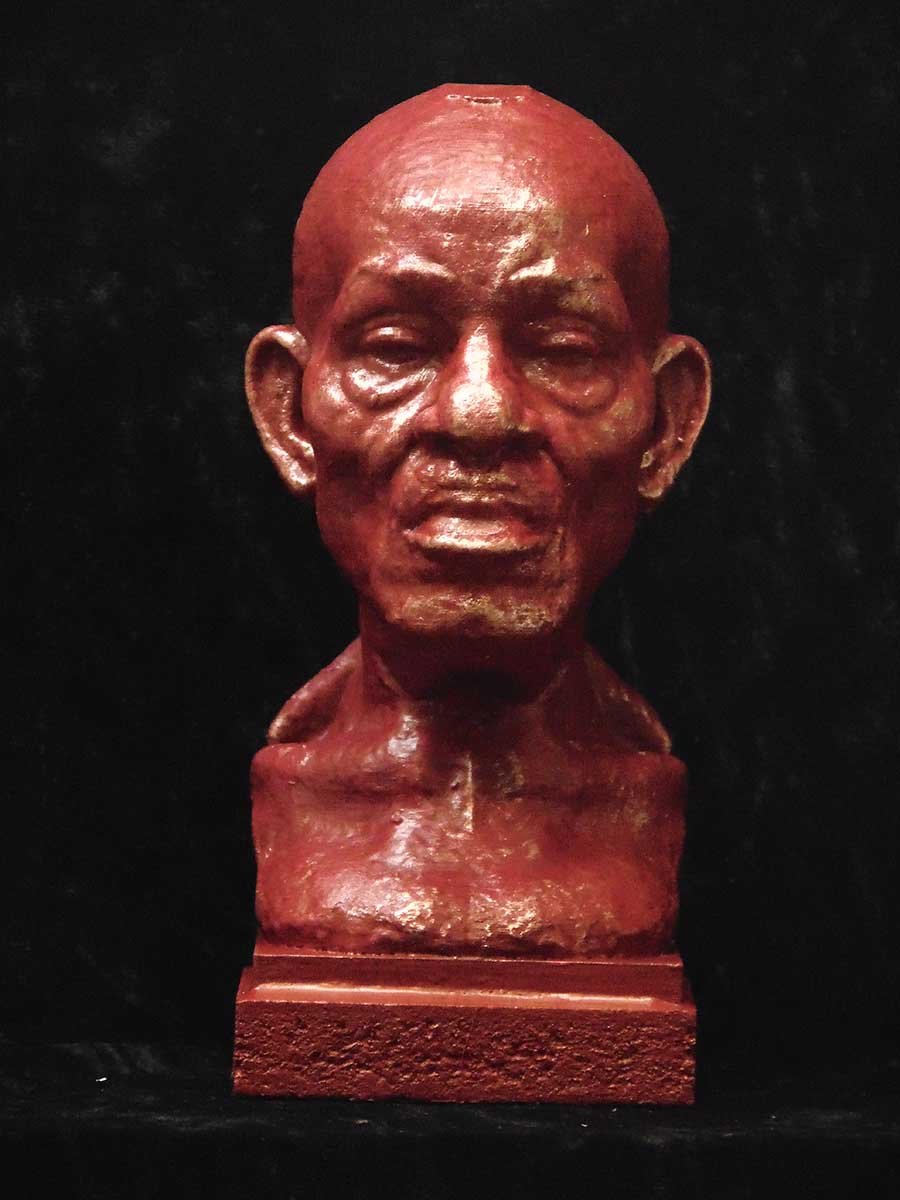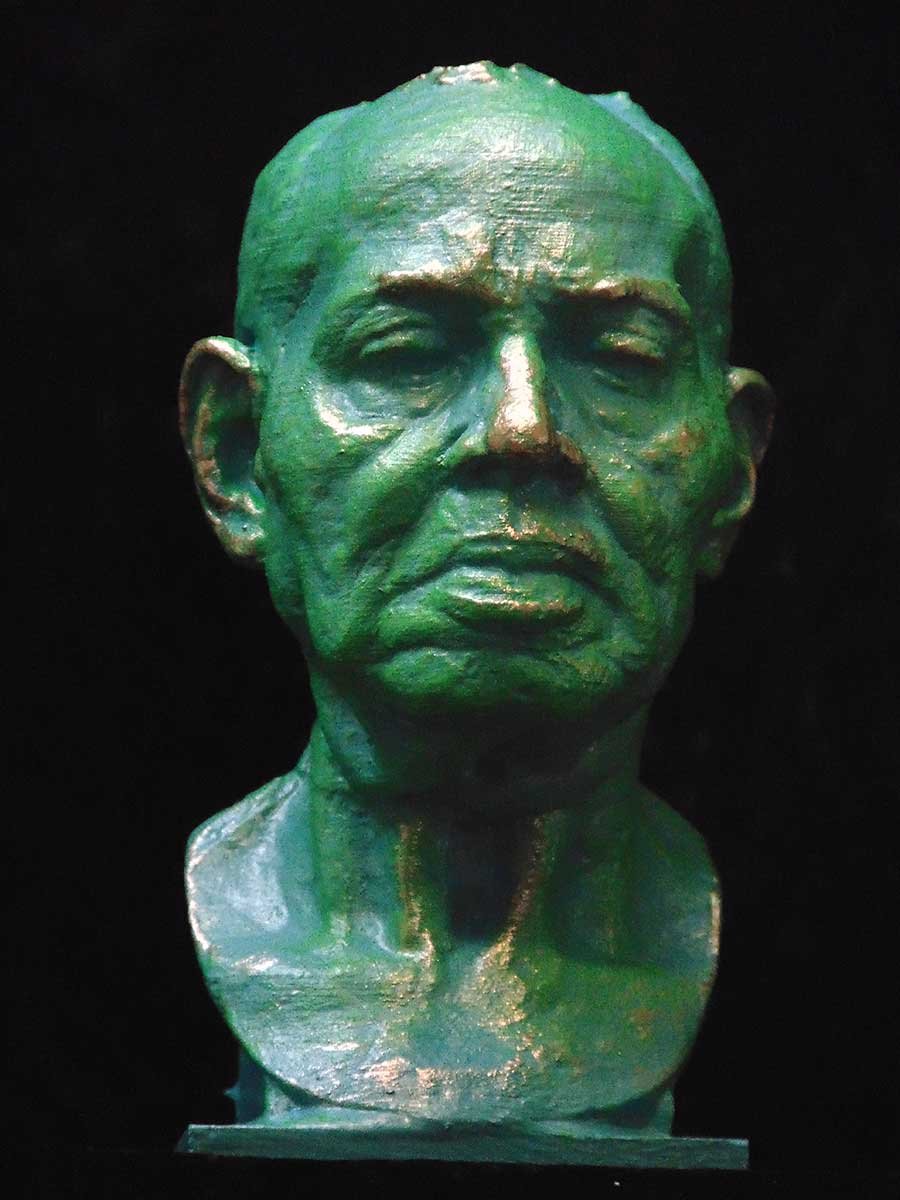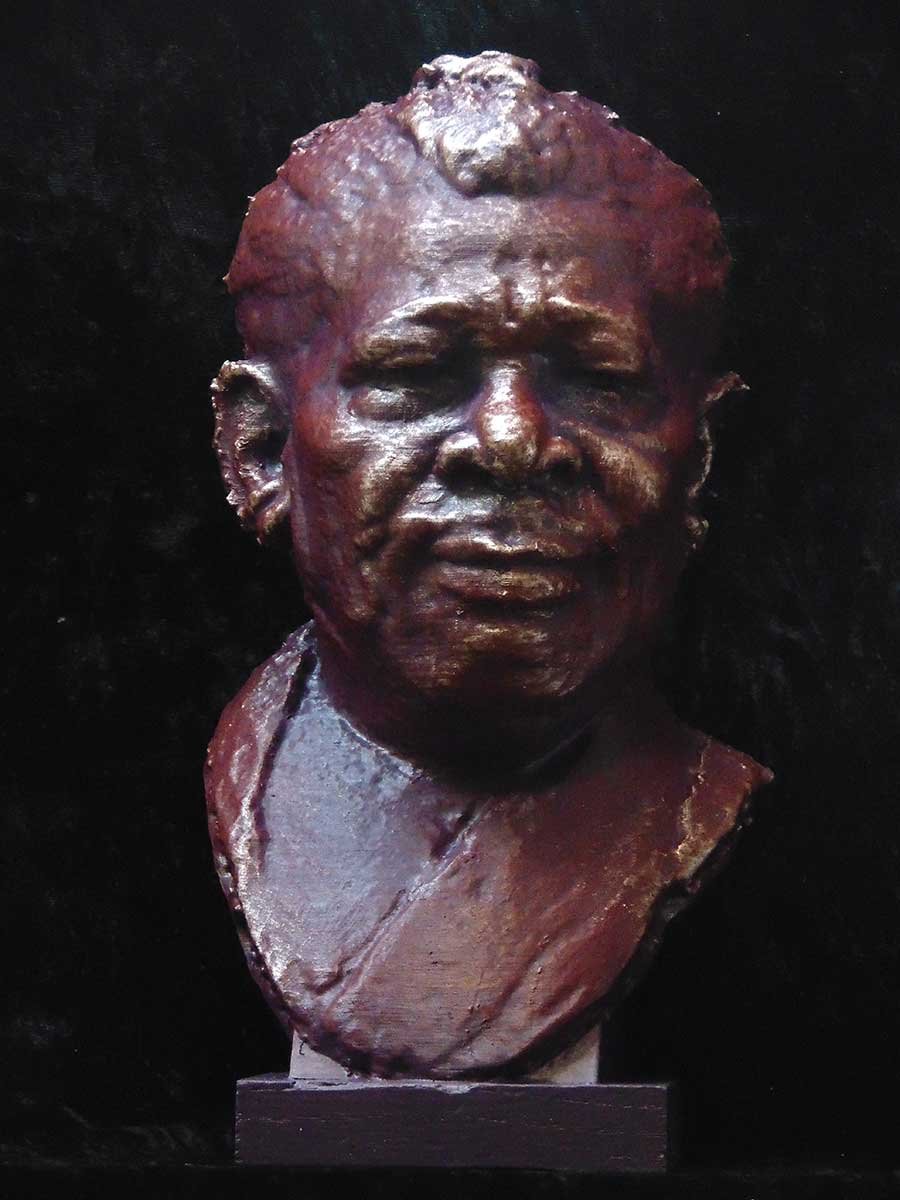Daniel Edwards
Picture this: you are attending a hip-hop concert. After waiting in a long line, you are lucky enough to get a spot at the front of the stage. The crowd piles in. The lights turn low. The room energy is palpable. As the artist takes the stage, you look to your left and see a sculptor. His eyes are focused on the performer while he earnestly shapes what appears to be a face. This scene is the reality for Daniel Edwards, an artist who captures musicians with startling accuracy and zeal during their performances. While Edwards works in many mediums, live sculpting is a keystone of his creative practice.
Daniel began live sculpting 20 years ago when he made a series of portraits focusing on Blues musicians such as B.B. King, John Lee Hooker, and Chuck Berry. Drawn to the visceral challenge of live shows, he developed a real-time sculpting technique using wax. Daniel had years of experience when he began the practice. However, he developed a unique artistic method that he continued to practice. Daniel's 23-year-old son, Rodman, discovered his father's Blues portraits five years ago. He was also a trained sculptor and expressed an interest in working together on a new series of live sculptures. They began working in tandem on a hip-hop artist series focusing on African American performers as a continuity of Daniel's Blues series. They went to roughly 150 shows and made sculptures of hip-hop artists such as Mos Def, Grandmaster Flash, and Snoop Dogg before Covid halted the project. Despite the unexpected pause in the series, Daniel enjoyed working alongside his son. In many ways, creativity is a family affair for Daniel.
Life Study of Chuck Berry by Daniel Edwards
Daniel Edwards with B.B. King
Daniel is the first professional artist in the family, but creative talent abounds among his relatives. His grandfather loved to paint, draw, and write poetry. "He had great natural skills. He could've entered art school, but after the Marines, he became a carpenter and started his own business restoring wood from Old Chevrolets," says Daniel. He recalls a crucial memory: his grandfather asked Daniel to draw a religious scene at eight years old. He painted Daniel's drawing, and the artwork won an award. The grandfather passed these carpentry skills on to Daniel's uncle, who encouraged his artistic interests from a young age. "My uncle was also very talented. He was like a mentor to me. He would buy my brother and me art supplies every Christmas," says Daniel.
Daniel's parents did not entirely understand his love for art. His mother respected his talent but didn't know how to encourage it in formal education, and his father didn't see how art could lead to a lucrative career. However, when Daniel achieved public recognition years later, his father shifted his perspective toward Daniel's craft. "Once, my dad heard Don Imus talking about me on the radio. He was so excited. Then one of my works was a Jeopardy question. Things like this made a difference to my father," explains Daniel. Nevertheless, the continued presence of creative minds in Daniel's childhood made a tangible impact.
Born and raised in LaPorte, Indiana, Daniel engaged in the arts throughout school and excelled in his classes. At 15, Daniel was trying to find local advertising for a comic book he had written. He reached out to Jeff Keim of Death Studios, a well-known artist of horror masks for film and TV who lived in the same town. Daniel met Jeff at his studios and loved his grotesque art. Jeff liked Daniel's enterprising spirit and invited him to be an assistant. Daniel worked with Jeff in high school and learned the basics of sculpting, mold making, and casting.
Daniel received a portfolio scholarship at the Herron School of Art. The scholarship affirmed to Daniel that he was on the right creative path. Daniel succeeded at university and received the Warhol Scholarship to study at the New York Academy of Art. At the New York Academy, Daniel realized sculpture was the medium he would focus on. Artists like Rodin and Jo Davidson heavily influenced Daniel. He decided to specialize in portrait sculpture. Daniel taught at both schools while studying and went on to teach at the Lyme Academy of Fine Arts in Connecticut.
In 1995, Daniel worked on a series of public sculptures for the Landmark for Peace memorial in Indianapolis, including figures such as Robert Kennedy and Martin Luther King Jr. At this time, Daniel was contemplating what he wanted to be known for as an artist. "I asked myself: From a contemporary standpoint, what is important to document for history? I thought that Civil Rights were important. I felt there wasn't enough depiction of African American individuals in sculpture. I wanted to help contribute and thought it was important for our culture," says Daniel. So, he reached out to the MLK Jr. Center in Atlanta and collaborated on a project where he made portraits of pioneering black athletes for the 1996 Olympics. Daniel sat down with many of the medalists to do in-person sculptures, and this officially launched his journey of making live portraits of notable African Americans. Daniel turned to music following the Olympic sculptures, leading to the Blues and Hip Hop sculptures he continues to create today.
Portrait of Dolores Huerta by Daniel Edwards
Daniel says that while the core practice of wax sculpting remains the same, his methods continually evolve: "I love digital art, but working on location with wax is the healthiest. Now I start at a live event, bring the wax sculpture home, and scan it into the computer. You can then scale the portrait into whatever size you want. We try to respect what we capture in the wax." After adjusting the portrait digitally, Daniel 3D prints the sculpture. When working with his son, they take their individual live sculptures from a show and merge the scans to create a collaborative portrait. Daniel also creates digital sculptures from scratch, such as a series on Civil Rights leaders during the BLM protests in 2020, but prefers to work with live subjects. "It was an intention to document life in this expressive real-time manner. You can make observations in the present in an energetic fashion. It is very vital," says Daniel. While life sculptures are the most gratifying artwork, Daniel has taken long breaks from this method due to the practical limitations of traveling to shows.
Daniel shifted focus towards more studio-based and digital sculptures, which led to his well-known pop culture portraits. Inspired by the surreal world of celebrity culture and internet tabloid headlines, Daniel made sculptures of famous individuals ranging from Paris Hilton to Prince Harry. Irreverent and ironic, the sculptures immortalize modern idolatry to reflect societal issues. The sculptures capture a cultural moment, and Daniel says that is the core of his art. "Art became a way to get ideas out there and tap into the narrative in the press. It is easy to cross the line with art to make something controversial. It is harder to truly say something with the work. Dedicating my ability to a person or a community, respecting people with my time, is how I say something," he explains.
Daniel connected with 1515 LG through Oklahoma City artist XVALA and immediately admired Susan's dedication to artists. "Susan is at a higher level than most galleries regarding business coordination. Her professionalism brought a level of excitement. It is such a high-caliber presentation of space. It is a little intimidating, but I like that. You have to commit to bringing your best game," says Daniel. For his July exhibition at 1515 LG, Daniel will be showcasing a wide range of sculptures, including many of the Hip Hop artist series, with his son.
Regarding the future, Daniel plans to reconnect with his original intentions as an artist to document life's vital moments. He has worked in education for the last ten years at California State University. While Daniel enjoys teaching, he finds it challenging to make art simultaneously. "I'm trying to shake off a decade of being in academia. For me, it is one or the other: teacher or creator. I recently bought a house in my hometown to be close to my mom and surrounded by my roots and mentors. I'm trying to find a balance in creative energy and spirit," says Daniel. So, keep an eye out next time you are at a concert. You might just see Daniel in the thick of the crowd, eyes on the musician, capturing life.
Please visit our website to learn more about Daniel and his work.



